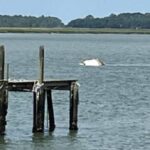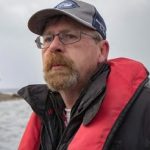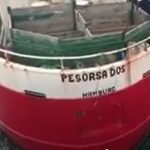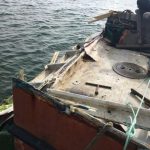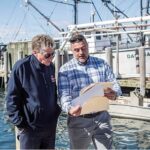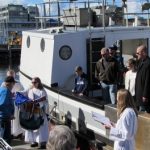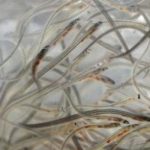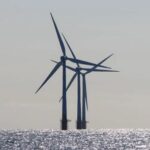Tag Archives: Alaska Board of Fisheries
Board of Fisheries passes new Kenai king salmon plan
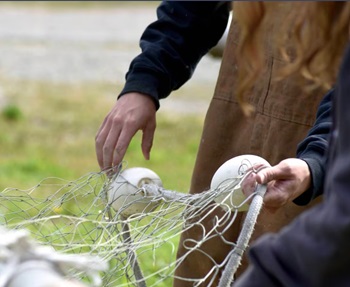 New management policies for Kenai River king salmon mean that sockeye bag limits in the river are up, and commercial setnet fishing is likely to be closed for the foreseeable future. Kenai River late run king salmon are now officially designated a stock of concern, which means a host of changes in the management plan. The Alaska Board of Fisheries finalized the designation at its meeting in Anchorage on March 1, and as part of it, revised the management plan for the fishery to help conserve more of the fish. At its October 2023 meeting, the board reviewed the Stock of Concern designation for the late run, which covers July and August in the Kenai River. At its March meeting, the board decided how to change the management plan to help rebuild the run over time. more, >>click to read<< 14:50
New management policies for Kenai River king salmon mean that sockeye bag limits in the river are up, and commercial setnet fishing is likely to be closed for the foreseeable future. Kenai River late run king salmon are now officially designated a stock of concern, which means a host of changes in the management plan. The Alaska Board of Fisheries finalized the designation at its meeting in Anchorage on March 1, and as part of it, revised the management plan for the fishery to help conserve more of the fish. At its October 2023 meeting, the board reviewed the Stock of Concern designation for the late run, which covers July and August in the Kenai River. At its March meeting, the board decided how to change the management plan to help rebuild the run over time. more, >>click to read<< 14:50
‘Freaked out’: Big money industry crippling salmon population in Alaska, natives say
 There is no more salmon. That’s what native Alaskan Ricko DeWilde is most concerned with these days. Once flowing with abundance, native tribes have been sounding the alarm about the overfishing of Alaskan Ricko DeWilde and other native fish by international fishing companies, essentially wiping out natives’ main source of food as well as a cultural touchstone. “That’s a way of life that we’re losing right there,” DeWilde said. “Any of the fishing along the Yukon River has been prohibited,” DeWilde said. “The commercial fishing industry is just running rampant out here and it’s big money. They take over to board of fish, they take over to politicians, they have them in their pocket and it becomes like a fish mafia out here.” photos, >>click to read<< 08:08
There is no more salmon. That’s what native Alaskan Ricko DeWilde is most concerned with these days. Once flowing with abundance, native tribes have been sounding the alarm about the overfishing of Alaskan Ricko DeWilde and other native fish by international fishing companies, essentially wiping out natives’ main source of food as well as a cultural touchstone. “That’s a way of life that we’re losing right there,” DeWilde said. “Any of the fishing along the Yukon River has been prohibited,” DeWilde said. “The commercial fishing industry is just running rampant out here and it’s big money. They take over to board of fish, they take over to politicians, they have them in their pocket and it becomes like a fish mafia out here.” photos, >>click to read<< 08:08
Trooper citations for salmon discards add grist to regional Alaska fishery dispute
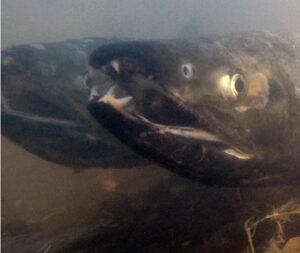 For years, residents along the Yukon and Kuskokwim rivers have accused fishers operating in marine waters north of the Alaska Peninsula of intercepting too many river-bound salmon, sometimes in hidden ways. Now a trooper enforcement campaign by the Alaska State Troopers wildlife division gives some credence to those accusations. The campaign, carried out in June and July in the region known as Area M, resulted in nine citations issued to captains and crew members for allegedly dumping unwanted salmon overboard, the Alaska State Troopers said in a statement issued Thursday. >click to read< 09:43
For years, residents along the Yukon and Kuskokwim rivers have accused fishers operating in marine waters north of the Alaska Peninsula of intercepting too many river-bound salmon, sometimes in hidden ways. Now a trooper enforcement campaign by the Alaska State Troopers wildlife division gives some credence to those accusations. The campaign, carried out in June and July in the region known as Area M, resulted in nine citations issued to captains and crew members for allegedly dumping unwanted salmon overboard, the Alaska State Troopers said in a statement issued Thursday. >click to read< 09:43

Chinook troll fishers in Southeast Alaska to put hooks in water July 1, but how many can they catch?
One day after the Ninth Circuit Court of Appeals overturned a Seattle judge’s ruling that had shut down the Southeast Alaska chinook troll fishery, the Alaska Department of Fish and Game delivered the catch limit news to the troll fishermen, specifying the number of kings they are allowed to catch during the upcoming season. Commercial trollers will have a total allocation of 74,800 chinook salmon during the first retention period, which begins July 1. Based on data from past years, the department thinks that the goal will be reached in 9-10 days, depending on weather. >click to read< 09:35
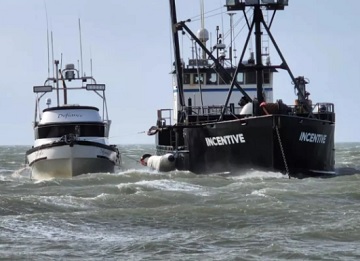
Amid record-low chum runs, Board of Fish pares down limits on Area M’s June fishery
The Yukon River’s chum salmon runs have returned at record lows over the last three years. At a recent meeting, the Alaska Board of Fisheries debated a contentious proposal that would have reduced fishing time for a controversial and lucrative fishery along the Alaska Peninsula, called Area M. Area M is a mixed-stock “intercept” fishery that targets salmon further from their spawning grounds than terminal fisheries like Bristol Bay. Proposal 140 was meant to limit the amount of chum caught in Area M’s South Peninsula fishery in June to allow more chum to return to Western Alaska rivers. The board ended up passing some restrictions on the fishery, but it’s far short of what residents in those areas were hoping for. And communities that depend on the Area M fishery say they aren’t satisfied either. >click to read< 13:20
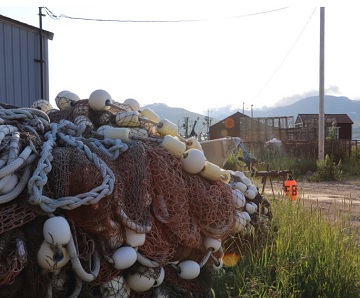
Chignik sockeye runs meet escapement goals for the first time since 2018 crash
The Chignik River has an early and a late sockeye run. The early run’s escapement is now over 420,000, and the late run’s escapement is now over 220,000 as of July 29. It’s the first time the early sockeye run has met its minimum escapement since it collapsed in 2018. The Alaska Board of Fisheries designated the early run as a stock of management concern in March as part of an agreement between the Chignik Intertribal Coalition and the Area M Seiners Association. >click to read< 13:31
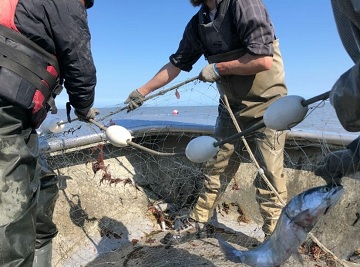
Cook Inlet fishermen sue over set-net closures
Days after they were ordered to take their nets out of the water, Cook Inlet set-netters are suing the state over the fishery’s closure. In a case filed in state court last week, the Cook Inlet Fishermen’s Fund, representing Cook Inlet fishermen, said the state is mismanaging the east-side set-net fishery to the benefit of other user groups. It’s asking the state to immediately reopen the fishery this season to its 440 or so permit-holders, to pay fishermen back for what they lost and to revise the plan that closed it in the first place. Due to restrictions linked to the sport fishery, the east-side set-net fishery in Cook Inlet closes when king salmon abundance on the Kenai River is low. The set-netters were shut down early this year for the fourth year in a row. >click to read< 11:12

Fish Board mostly leaves Sitka herring alone following truce between users
After days of deliberation and a contentious set of proposals targeting the Southeast Alaska herring fisheries, the Alaska Board of Fisheries ultimately declined to make any major changes. To make attending the multi-week meeting easier for stakeholders, the board split the proposals into topics scheduled in three sessions, with herring first. There were 14 proposals dealing with herring from a variety of stakeholders, but the most contentious was were from the Sitka Tribe of Alaska and the Southeast Herring Conservation Alliance. The tribe’s proposals asked for a variety of changes to Sitka Sound herring management. The tribe’s main focus was to try to preserve more of the herring stock for subsistence use, but the commercial stakeholders say it would have come at the cost of the industry. >click to read< 15:15
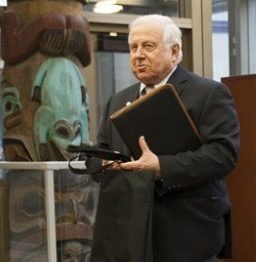
Former Alaska Board of Fisheries appointee Roland Maw pleads guilty to PFD fraud
A former nominee to the Alaska Board of Fisheries and a prominent Cook Inlet commercial fisherman pleaded guilty to a misdemeanor count of unsworn falsification on Friday, ending a six-year legal struggle that saw him accused of multiple counts of Permanent Fund dividend fraud and improperly obtaining resident fishing licenses. Roland Maw, nominated by former Gov. Bill Walker to the Fish Board in 2015 but never appointed, will pay a $500 fine and pay restitution of $9,582. He had been facing 12 felonies and 5 misdemeanors; the remaining charges are dismissed. >click to read< 13:23
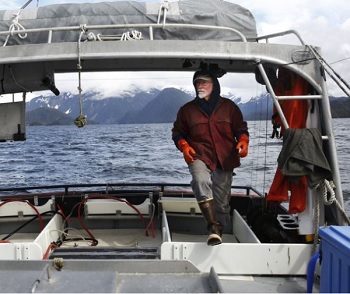
A win for Alaska trollers – Judge denied request for injunction to keep season closed
Magistrate Judge Michelle Peterson, of the US District Court of Western Washington, ruled on Tuesday (6-9-20) that an injunction petition filed by a Washington state environmental organization to protect killer whales circumvents established fisheries law. During oral arguments before her in May (5-28-20), Judge Peterson put hard questions to counsel for the Wild Fish Conservancy about whether the federal court had jurisdiction over the case, when the matter had not been tested before the Alaska Board of Fisheries, or the National Marine Fisheries Service — organizations which have regulated fisheries for the last four decades under the overall umbrella of the Magnuson-Stevens Act. So Judge Peterson’s ruling wasn’t unexpected. Nevertheless Kurt Beardslee, executive director of the Conservancy, says he’s disappointed. >click to read< 08:14
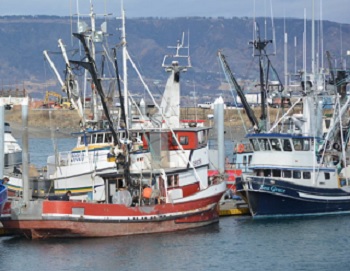
Seawatch: Board of Fish meets March 9
The Alaska Board of Fisheries kicks off its meeting dealing with state-wide finfish proposals on March 9 in Anchorage, covering about 20 proposals and expected to last four days. Those proposals include some that, while generalized to fit the criteria of a state-wide proposal, are clearly aimed at the relentless “fish wars” in the Upper Cook Inlet salmon fisheries. One of the proposals, submitted by the Kenai River Sportfishing Association,,, >click to read<17:06
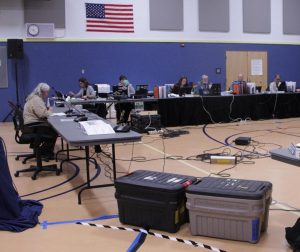
Alaska Board of Fisheries rejects permit stacking, expands subsistence opportunity near Dillingham
Among the highlights at the four-day meeting, the board passed proposals to expand subsistence fishing near Dillingham. Dip net subsistence fishing will be allowed in the area, and subsistence users will be allowed to fish at any time. Since the 1970s, subsistence has been restricted to a three-day schedule during peak sockeye season near Dillingham to in an effort reduce wanton waste. Many testified at the meeting that schedule is unnecessary and onerous. The Curyung Tribal Council applauded the decision.,, The board rejected all proposals related to permit stacking, allowing one person to use extra gear if they hold two commercial fishing permits. They also voted not to extend the length of commercial fishing vessels in the bay. >click to read<10:18
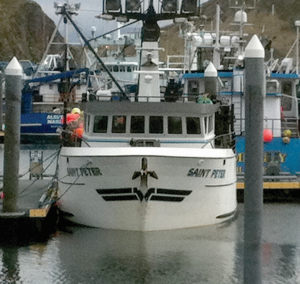
Bering Sea Battle breaks out over growth of ‘Super 8s’ in state cod fishery
The success of the state waters Dutch Harbor Pacific cod fishery in the Bering Sea is scaring both the industrial trawl and longline fleets, and even a local Unalaska fisherman who says a new breed of small boats known as Super 8s are catching way too many fish. In 2014, the new fishery opened with 3 percent of the total Bering Sea cod quota, and two years later it more than doubled to 6.4 percent, by votes of the Alaska Board of Fisheries to promote small boat fisheries. And it may get a lot bigger, as the board will soon hear proposals for growing the fishery to 8, 10 or as much as 20 percent of all the cod available to fishermen in the Bering Sea. >click to read<11:28
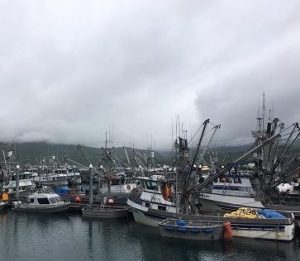
Chignik fishermen stuck ashore as sockeye run fails
Communities around the Gulf of Alaska are struggling with low sockeye returns, and villages near the Chignik River are no different. The region is experiencing its weakest recorded run in the last in 50 years. Fishermen are stuck waiting for a commercial opener,,, There’s really only one thing to talk about in Chignik Bay these days — where are the sockeye? “Shock is pretty much the guaranteed feeling of most people as kinda everybody walking around dazed.” according to Ben Allen, a local fisherman. It’s to the point where residents have pulled their subsistence nets voluntarily to try and get every salmon they can up the Chignik River.,, And, like other nearby communities, red salmon is the main source of income that keeps the lights on in the village. >click to read<18:12
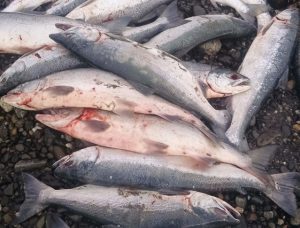
Smoke-filled rooms
With the fishing season beginning in the 49th state, Alaska Gov. Bill Walker has been holding private meetings to forge an agreement between commercial, sport and other fishing interests on how to manage salmon in Cook Inlet. The reason why is unclear. By law, the regulation of state fisheries falls solely under the jurisdiction of the Alaska Board of Fisheries. One of the first acts of the Alaska Legislature after Statehood in 1959 was to establish a Board of Fish and Game – later split into the separate boards for fish and wildlife management – to insulate resource decisions from backroom politicking. >click to read<10:37
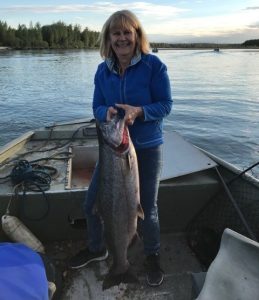
No kings
Snow and ice still cover the tributaries of the Susitna River basin, but already the Alaska Department of Fish and Game is talking about closing the Chinook salmon fishery for the 2018 season. The agency’s fear for the drainages of both the Susitna and Little Susitna mirrors the 2017 fear for the 24,000-square-mile Copper River basin : No king salmon. In the case of the Copper last year, the state was faced with a scientifically calculated Chinook forecast calling for the return of 29,000 of the fish – only 5,000 more than were needed for spawning in streams located behind a gauntlet of commercial, subsistence, personal-use dipnet, and rod-and-reel fisheries. >click to read<14:48
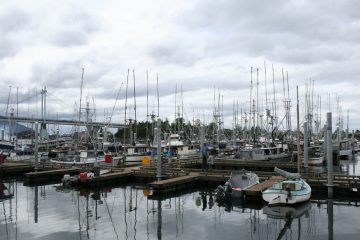
Chinook action plan a ‘question mark’ for conservation and economics
There will be a lot less fishing for king salmon in Southeast in the coming season, after the Alaska Board of Fisheries took dramatic steps to protect dwindling chinook returns to the region’s major river systems. Before wrapping up its 13-day meeting in Sitka on Tuesday, the Board of Fish passed an “action plan” intended to reverse the downward spiral in Alaska’s wild king salmon. The plan targets three primary rivers — or stocks of concern — but leaves the door open for similar conservation measures elsewhere, should they become necessary. >click here to read< 09:29
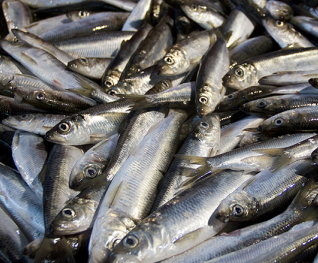
Industry tops subsistence on Board of Fisheries herring votes
In a morning of controversial deliberations at the Alaska Board of Fisheries meeting Tuesday, subsistence users weren’t successful in herring conservation measures to cut commercial fishing harvests. But a favored backup proposal, No. 106, did pass by a 6-1 vote: 4 square miles in Sitka Sound were added to a 10-square mile protected area reserved for subsistence harvest and barred from commercial fishing. >click here to read< 15:18
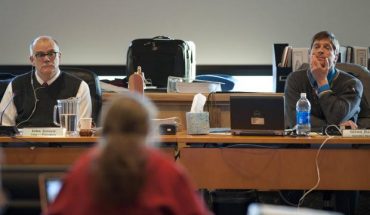
Fish Board: Spotter planes out, Chinook actions on hold for now
The Alaska Board of Fisheries voted to ban spotter planes in Southeast salmon fisheries and provided some relief to struggling commercial troll fishermen on Friday, the first full day of deliberations for the board. Though the board made significant changes to Southeast finfish regulations, Juneau fishermen were left with a cliffhanger: salmon action plans aimed at protecting struggling Taku and Chilkat river Chinook — which could leave fishermen docked for a significant part of the season — won’t be voted on until at least Saturday morning. >click here to read< 17:19

Alaska Board of Fish gets earful on herring, salmon proposals
More than 200 people turned out in Sitka to testify about herring and salmon fisheries in front of the Alaska Board of Fisheries on Tuesday. And about two-thirds of those who spoke were concerned over the commercial management of the Sitka sac roe herring fishery. The herring industry wants to maintain the status quo. Fishermen and processors expressed support for the methods used by the Alaska Department of Fish and Game to predict how many herring they can safely harvest. >click here to read< 09:38
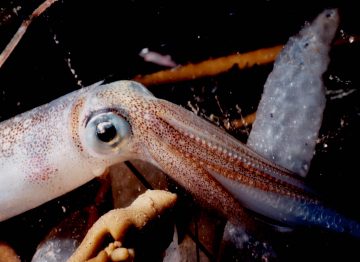
Squid fishery proposed for Southeast as squid follow warmer waters to Alaska
Following warmer waters to Alaska, market squid may be here to stay and at least four Southeast fishermen think there’s enough here to begin catching and marketing them. A proposal to create a squid fishery in Southeast is slated for the Alaska Board of Fisheries meeting Jan. 11-23 in Sitka. If adopted, the board would work with fishermen and stakeholders to develop a purse seine fishery for market squid, which are already being caught in lucrative fisheries in California and Oregon. click here to read the story 12:40
Prelude to war – A news analysis
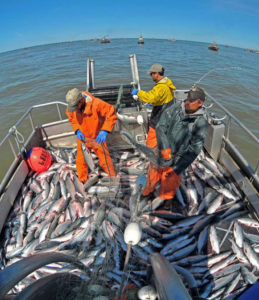 The mayor of Kenai, Alaska is “extremely disappointed” with the Alaska Board of Fisheries, and the mayor of the Matanuska-Susitna Borough less than pleased but “satisfied” with the Board’s big compromise. The big compromise itself? The Board will avoid both Wasilla and Kenai in favor of a 2020 meeting in Anchorage. So contentious has become the issue of Cook Inlet fishery management that politicians now argue over minutiae while the bigger issues plaguing the Inlet’s fisheries are ignored. click here to read the story 10:46
The mayor of Kenai, Alaska is “extremely disappointed” with the Alaska Board of Fisheries, and the mayor of the Matanuska-Susitna Borough less than pleased but “satisfied” with the Board’s big compromise. The big compromise itself? The Board will avoid both Wasilla and Kenai in favor of a 2020 meeting in Anchorage. So contentious has become the issue of Cook Inlet fishery management that politicians now argue over minutiae while the bigger issues plaguing the Inlet’s fisheries are ignored. click here to read the story 10:46
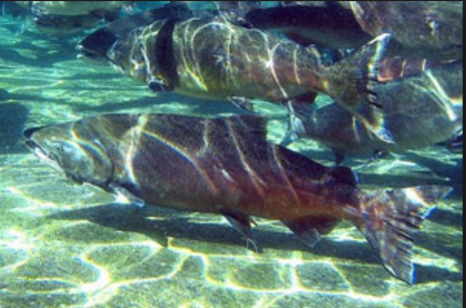
Copper River disaster
This is a developing story – No one seems to have any idea what sort of astronomical price a rare and iconic Copper River king salmon from Alaska might demand when the commercial fishing season opens in about a week – if there are any fish to be sold. The Alaska Board of Fisheries is facing an emergency petition to ban the sale of the big fish in the name of conservation. Alaska subsistence fishermen who are supposed to have a fishing priority but have already been told they will be restricted to a limit of two kings each for the entire season are talking about the possibility of a lawsuit if the state allows the commercial king fishery to open. And even if the start of the fishery proceeds as scheduled on May 18, the opening day catch is expected to be no more than a few hundred fish, if that, given that the Alaska Department of Fish and Game has already ordered the closure of fishing areas where most kings are caught. click here to read the article. 09:45
Alaska Crab fishery faces identity crisis, while Fishermen have a tough time finding snow crab
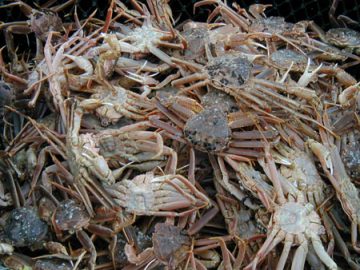 Fishermen are having the toughest time in the past five years finding snow crab, according to the Alaska Department of Fish and Game, in Unalaska. The fleet of 60 crab boats had caught 16. 6 million pounds, for 74 percent of the quota in the Bering Sea, ADF&G biologist Ethan Nichols in Unalaska said Monday. But based on the number of crab in an average pot, the catch has plummeted from a peak of 237 to 116 in the most recent weekly tally, he said. The average weight is 1.3 pounds per individual snow crab, he said. continue reading the story here – Crab fishery faces identity crisis. Is it a bairdi Tanner or is it an opilio Tanner snow crab? Or is it something in between, a hybrid? The Bering Sea commercial crab fishery is facing an issue fundamental to identity, and in what fishery which crustaceans can legally appear. In this issue, it’s up to the Alaska Board of Fisheries. Crabbers and their allies in the Pribilof Islands say a hybrid should be considered part of the catch of whatever the fishermen are targeting, whether Tanner bairdi or Tanner opilio. While both have Tanner in their names, the bairdi are commonly known as Tanners, while the typically smaller opilio are called snow crab. continue reading the story here 12:10
Fishermen are having the toughest time in the past five years finding snow crab, according to the Alaska Department of Fish and Game, in Unalaska. The fleet of 60 crab boats had caught 16. 6 million pounds, for 74 percent of the quota in the Bering Sea, ADF&G biologist Ethan Nichols in Unalaska said Monday. But based on the number of crab in an average pot, the catch has plummeted from a peak of 237 to 116 in the most recent weekly tally, he said. The average weight is 1.3 pounds per individual snow crab, he said. continue reading the story here – Crab fishery faces identity crisis. Is it a bairdi Tanner or is it an opilio Tanner snow crab? Or is it something in between, a hybrid? The Bering Sea commercial crab fishery is facing an issue fundamental to identity, and in what fishery which crustaceans can legally appear. In this issue, it’s up to the Alaska Board of Fisheries. Crabbers and their allies in the Pribilof Islands say a hybrid should be considered part of the catch of whatever the fishermen are targeting, whether Tanner bairdi or Tanner opilio. While both have Tanner in their names, the bairdi are commonly known as Tanners, while the typically smaller opilio are called snow crab. continue reading the story here 12:10
Fishy-nomics
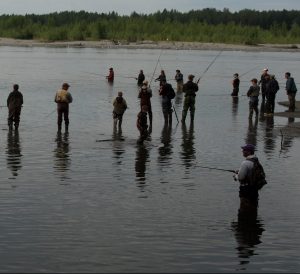 As a blunt reminder of the value of salmon to all Alaskans, businessmen and women from the Matanuska-Susitna Borough paraded before the Alaska Board of Fisheries on Saturday to talk business. Money and jobs have always been the rallying cries of commercial fishermen who catch the majority of salmon that make their way into Cook Inlet, the long fiord at the front door of Anchorage. And government, both state and federal, has long been receptive to their financial pleas. When weak king salmon runs in 2012 forced restrictions that put Kenai Peninsula commercial fishermen on the beach, then Gov. Sean Parnell asked for a federal disaster declaration. When it came, the Peninsula Clarion reported, “an estimated 443 permit holders from Cook Inlet’s eastside setnet fishery” vied for $4.6 million in aid. No government entity, however, has jumped in to bail out Mike Hudson, the owner of 3 Rivers Fly & Tackle in Wasilla, even though his business has in recent years been devastated by weak salmon returns linked in part to how Inlet salmon are managed. continue reading the article here 09:40
As a blunt reminder of the value of salmon to all Alaskans, businessmen and women from the Matanuska-Susitna Borough paraded before the Alaska Board of Fisheries on Saturday to talk business. Money and jobs have always been the rallying cries of commercial fishermen who catch the majority of salmon that make their way into Cook Inlet, the long fiord at the front door of Anchorage. And government, both state and federal, has long been receptive to their financial pleas. When weak king salmon runs in 2012 forced restrictions that put Kenai Peninsula commercial fishermen on the beach, then Gov. Sean Parnell asked for a federal disaster declaration. When it came, the Peninsula Clarion reported, “an estimated 443 permit holders from Cook Inlet’s eastside setnet fishery” vied for $4.6 million in aid. No government entity, however, has jumped in to bail out Mike Hudson, the owner of 3 Rivers Fly & Tackle in Wasilla, even though his business has in recent years been devastated by weak salmon returns linked in part to how Inlet salmon are managed. continue reading the article here 09:40
Cook Inlet Alaska Board of Fisheries meeting to kick off with new faces, old grudges
 The Alaska Board of Fisheries has a full plate for its triennial Upper Cook Inlet finfish meeting beginning Feb. 23 and running through March 3 in Anchorage. The board will look quite different with three new members since the last meeting and so does the fishery after three years of restriction, tight markets, lawsuits, and accusations of disregarding the best science that revolve around the board decisions at its last Upper Cook Inlet meeting in 2014. Chinook, or king, salmon stocks on the Kenai River and around the state started to plummet in the late 2000s, and in 2014, the Board of Fisheries approved paired restrictions directing the Alaska Department of Fish and Game had to take certain actions when the Kenai king fishery was restricted, including limiting commercial fishing time. Sport representatives generally thought it fair to share the burden of conservation, while commercial fishermen said it hit them harder than the sportfishermen. This year, nearly 200 proposals from commercial, sport and subsistence fishermen will try to overhaul entire fishery management plans, revise escapement goals, expand or contract fishing areas and openings hours, add or remove new gear types and in general try to open up more fishing opportunity for each respective group. Continue reading the article here 08:54
The Alaska Board of Fisheries has a full plate for its triennial Upper Cook Inlet finfish meeting beginning Feb. 23 and running through March 3 in Anchorage. The board will look quite different with three new members since the last meeting and so does the fishery after three years of restriction, tight markets, lawsuits, and accusations of disregarding the best science that revolve around the board decisions at its last Upper Cook Inlet meeting in 2014. Chinook, or king, salmon stocks on the Kenai River and around the state started to plummet in the late 2000s, and in 2014, the Board of Fisheries approved paired restrictions directing the Alaska Department of Fish and Game had to take certain actions when the Kenai king fishery was restricted, including limiting commercial fishing time. Sport representatives generally thought it fair to share the burden of conservation, while commercial fishermen said it hit them harder than the sportfishermen. This year, nearly 200 proposals from commercial, sport and subsistence fishermen will try to overhaul entire fishery management plans, revise escapement goals, expand or contract fishing areas and openings hours, add or remove new gear types and in general try to open up more fishing opportunity for each respective group. Continue reading the article here 08:54
Ringing in new round of ‘fish wars’ as ADFG manages budget
 In the face of yet another round of budget cuts, Alaska’s largest private employer, the seafood industry, will have entirely new management schemes to sort out and live under in 2017 alongside status quo projections for harvest in key fisheries. The Alaska Department of Fish and Game will take another budget cutback responding to the state’s multi-billion dollar deficit that has yet to be patched. Gov. Bill Walker released a proposed fiscal year 2018 budget on Dec. 15. Among other cuts, Walker proposes a budget of $28.9 million for ADFG. This is a 36 percent reduction from the fiscal year 2015. ADFG will have to find ways to deal with budget cuts to monitor key fisheries stocks, including the iconic king salmon that has fallen in abundance beginning in the late 2000s. Further, commercial fisheries management programs will suffer,,, Fish wars renewed – As usual, much of Alaska’s year will center around salmon. Among the biggest items for Alaska’s state fisheries will be the two-week 2017 Upper Cook Inlet meeting of the Alaska Board of Fisheries. Read the rest of the article here 16:25
In the face of yet another round of budget cuts, Alaska’s largest private employer, the seafood industry, will have entirely new management schemes to sort out and live under in 2017 alongside status quo projections for harvest in key fisheries. The Alaska Department of Fish and Game will take another budget cutback responding to the state’s multi-billion dollar deficit that has yet to be patched. Gov. Bill Walker released a proposed fiscal year 2018 budget on Dec. 15. Among other cuts, Walker proposes a budget of $28.9 million for ADFG. This is a 36 percent reduction from the fiscal year 2015. ADFG will have to find ways to deal with budget cuts to monitor key fisheries stocks, including the iconic king salmon that has fallen in abundance beginning in the late 2000s. Further, commercial fisheries management programs will suffer,,, Fish wars renewed – As usual, much of Alaska’s year will center around salmon. Among the biggest items for Alaska’s state fisheries will be the two-week 2017 Upper Cook Inlet meeting of the Alaska Board of Fisheries. Read the rest of the article here 16:25
Alaska dipnetting – Disorderly and unsafe
 The winter meeting of the Alaska Board of Fisheries is months away but already the weirdness has begun. At a work session in Kenai-Soldotna this week, the board spent some time kicking around the idea of motor restrictions for the Kenai River to make the popular, personal-use dipnet fishery there safer. The suggestion was brought to the board by 72-year-old Soldotna resident George Parks and picked up by the board’s new vice-chair Sue Jeffery, who termed the Kenai a “disorderly, unsafe fishery.” A commercial fisherman from Kodiak, Jeffery appeared unaware everyone was discussing the wrong fishery. There are deadly dipnet fisheries in Alaska, but the Kenai boat fishery is not one of them. The short stretch of the Kenai open to dipnetting from boats during the short July dipnet seasons does get congested. Some boats have collided, and a few have even taken on water until they sank. But no one has ever died. Read the story here 14:38
The winter meeting of the Alaska Board of Fisheries is months away but already the weirdness has begun. At a work session in Kenai-Soldotna this week, the board spent some time kicking around the idea of motor restrictions for the Kenai River to make the popular, personal-use dipnet fishery there safer. The suggestion was brought to the board by 72-year-old Soldotna resident George Parks and picked up by the board’s new vice-chair Sue Jeffery, who termed the Kenai a “disorderly, unsafe fishery.” A commercial fisherman from Kodiak, Jeffery appeared unaware everyone was discussing the wrong fishery. There are deadly dipnet fisheries in Alaska, but the Kenai boat fishery is not one of them. The short stretch of the Kenai open to dipnetting from boats during the short July dipnet seasons does get congested. Some boats have collided, and a few have even taken on water until they sank. But no one has ever died. Read the story here 14:38


































